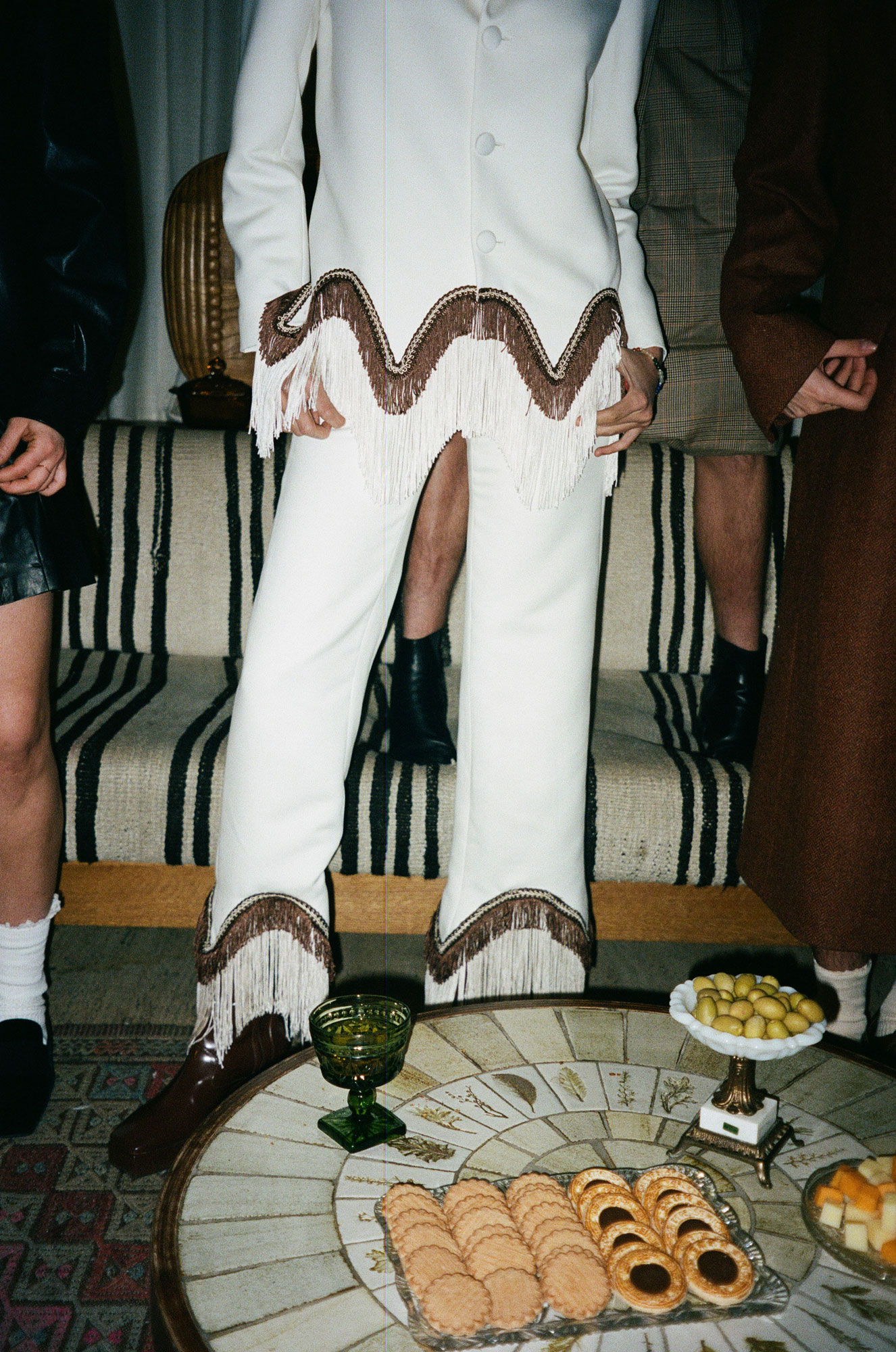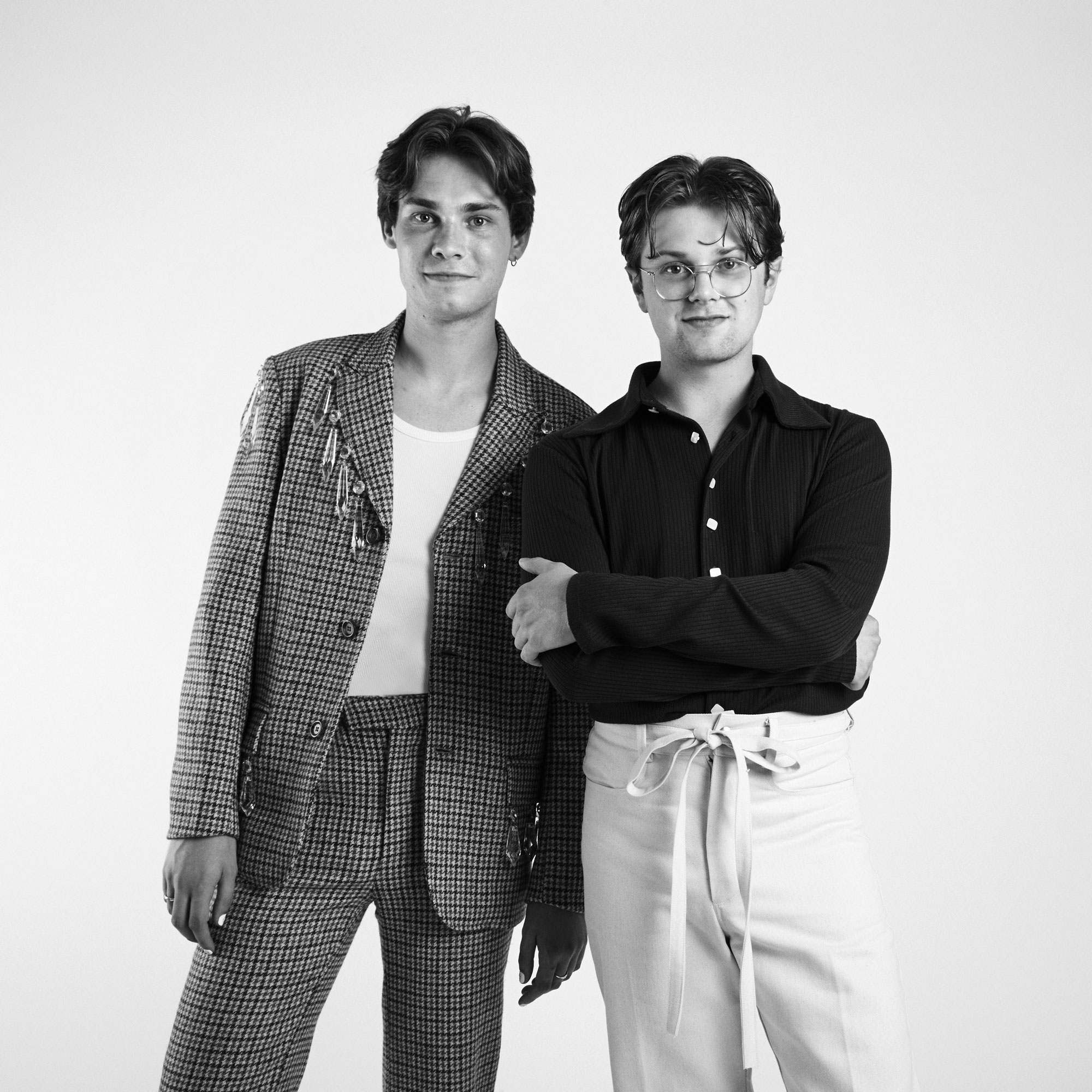

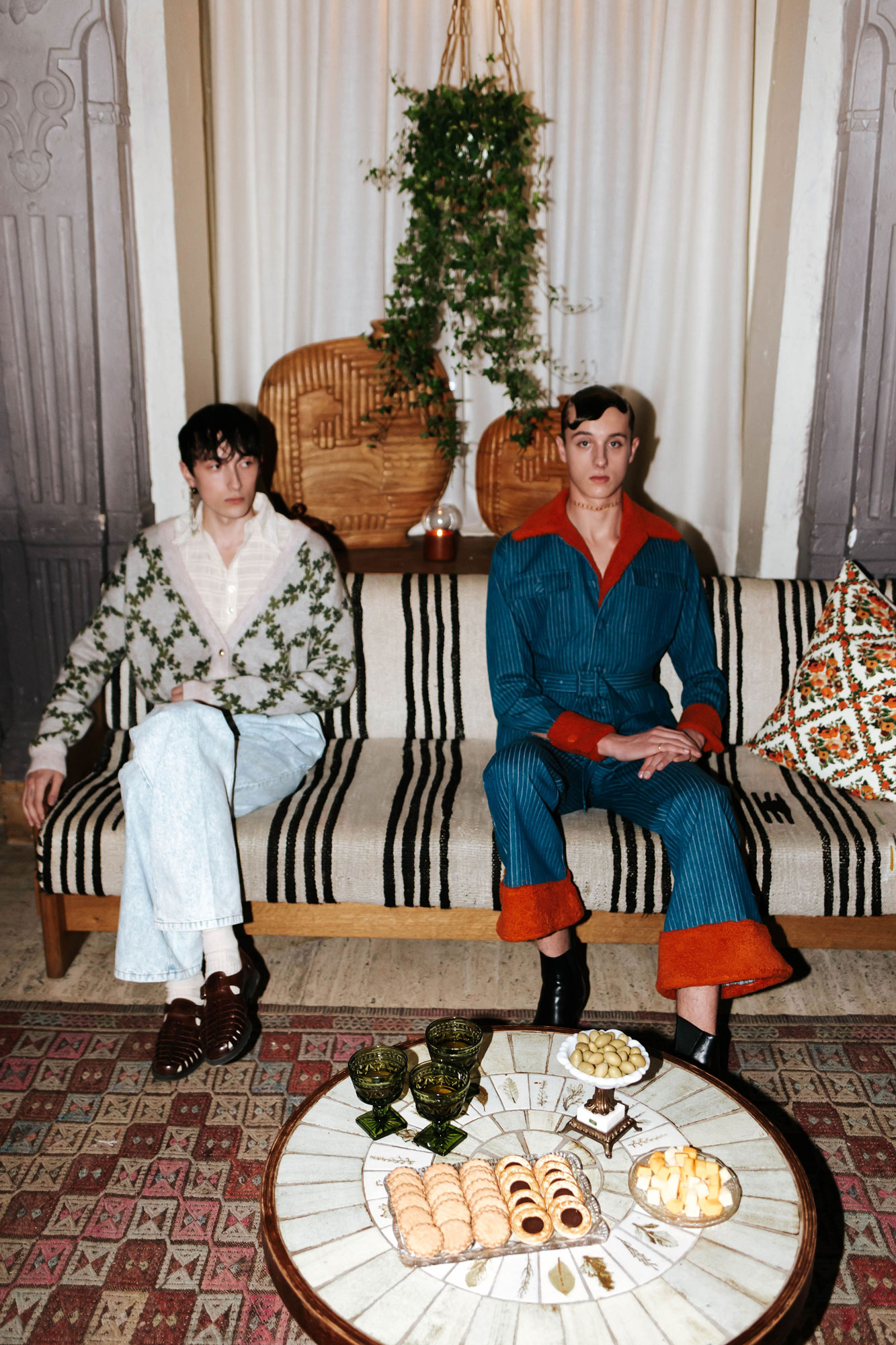
Tanner Fletcher takes a new approach to genderless fashion centered around home décor. We talked to the co-founder and creative director Fletcher Kasell about their idea of clothing, nostalgia, and the interconnectedness of home and wardrobe.
Bourgeoise’s understatement plays with the idea of comfort of feeling home and the nostalgic driven approach of a new generation that struggles to find their place – That’s something that comes to mind if you look at the Tanner Fletchers collections. And indeed, the unexplored realms of the in-between are something that can be seen as the specialty of the founders. Every piece is intended to push the boundaries of concepts such as femininity and masculinity, ideas of fashion, and interior as well as limits like the past and the now. And there couldn’t be any better place than New York City, to serve as the base of such an emerging and innovative brand. A place, where everything falls into pieces and creates a holistic universe out of ready-to-wear pieces with befittingly curated home décor items.
Since its founding in 2020, Fletcher and his partner Tanner Richie joined their creative forces to elevate people’s personal style with their humorous approach to bridging gaps. Besides their different design backgrounds in fashion and interior, they are sharing a common passion for interior and vintage pieces. Something that can be thoroughly seen in their brand identity and the references. Nevertheless, none of the pieces seems tatty, but rather modern in a way of tackling the nostalgic feelings of a young generation. Driven by the energy of the city with its laid-back coolness and timeless refinement, Tanner Fletcher shows the aptitude of craftsmanship with a modern angle on the use of sustainable materials and responsible productions. For their Runway Debut at New York Fashion Week, they unveiled a collection that seeks inspiration from colours and textures that came straight from the late 1960s and early 1970s.
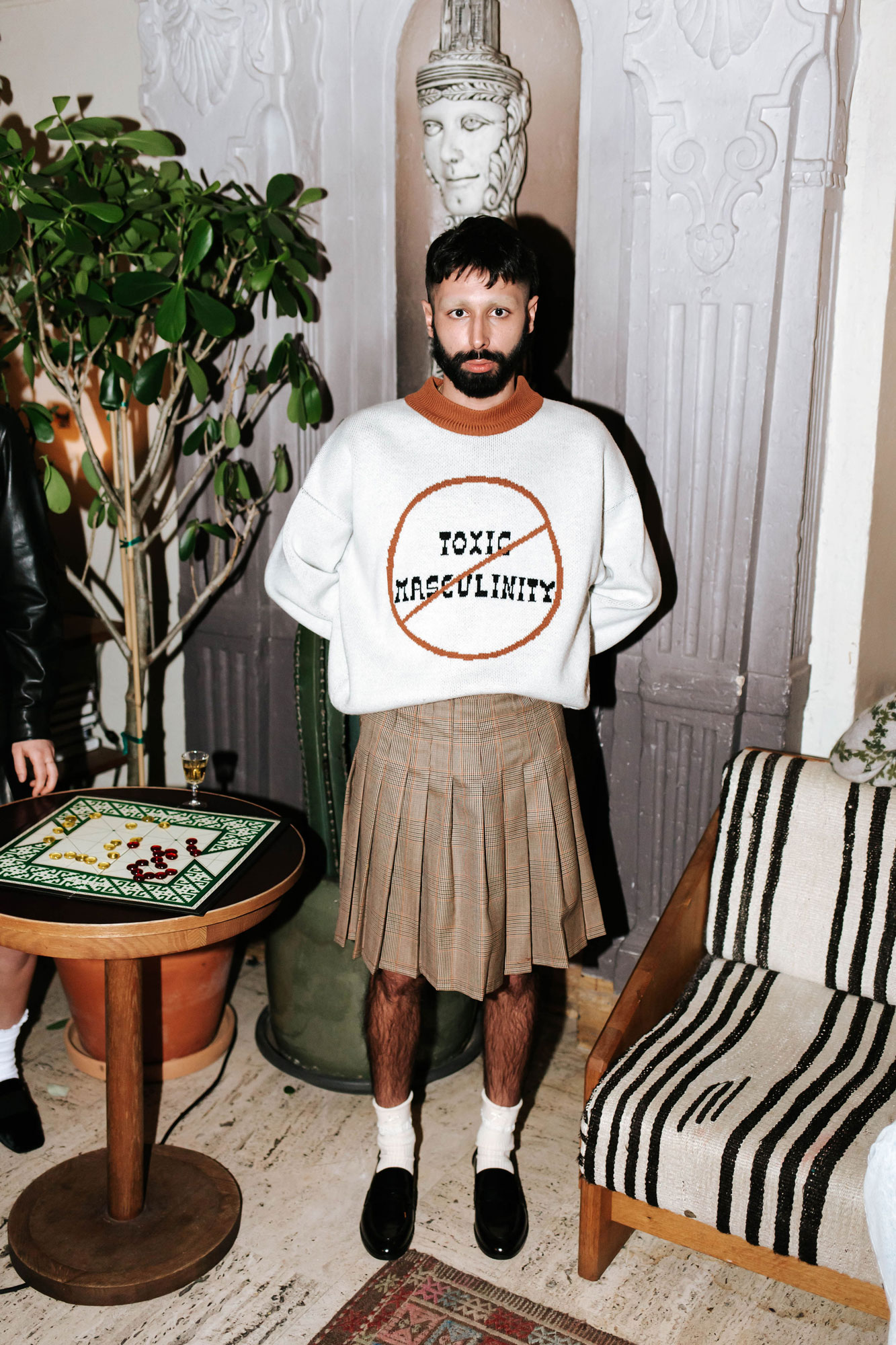
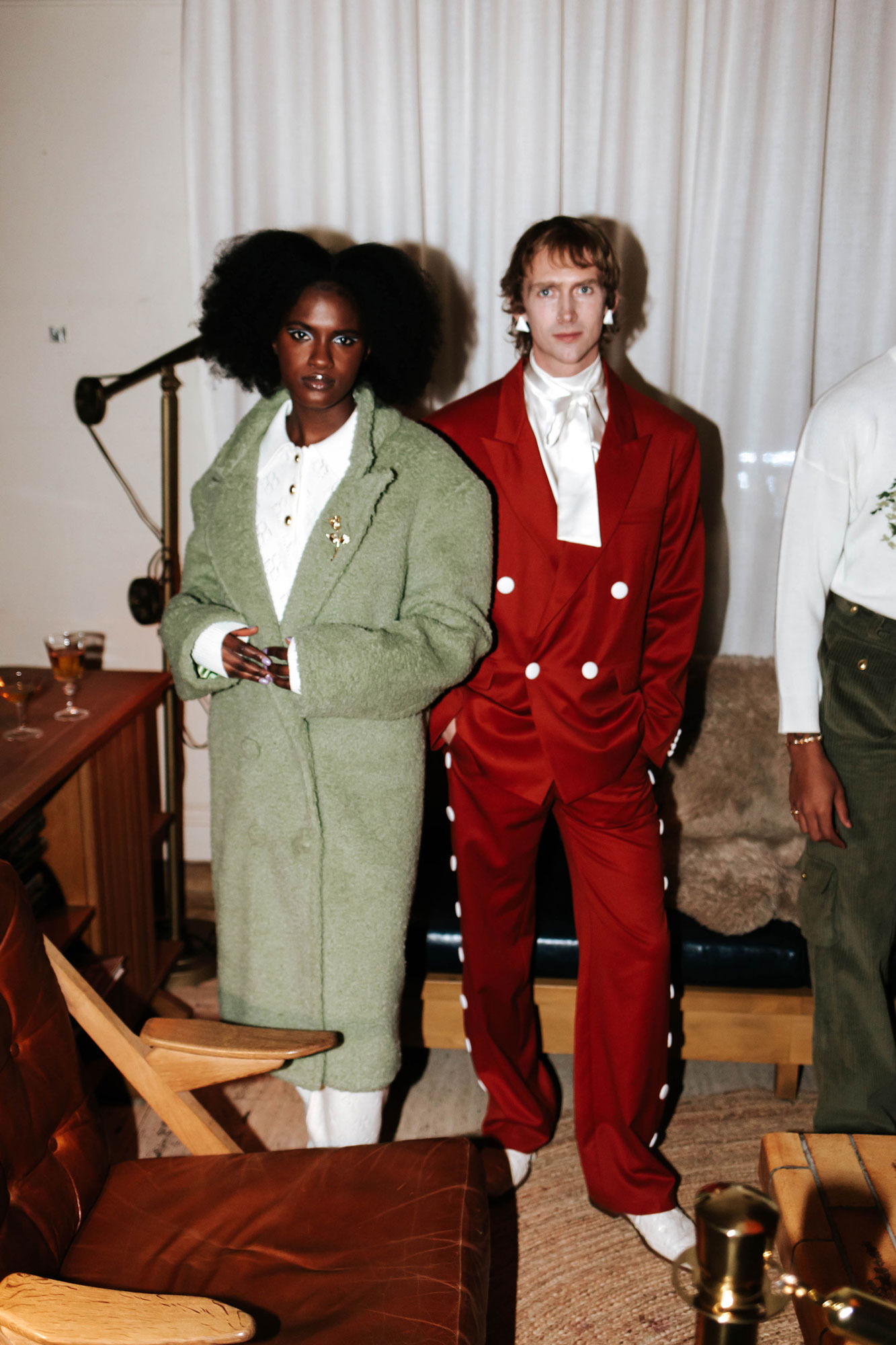
Phil & Diarra & Thea Garlid
Let’s talk about the meaning of nostalgia and home and how it influences your unique design angle?
Nostalgia feels like a very personal and romantic feeling that is different for every person. We express our nostalgia with nods to the home, silhouettes of another time and craftsmanship that is hard to come by. Home to us is the world we like to create by surrounding ourselves with the people and things that we love and are connected to. We get a feeling of home with each other, in our apartment, with our families and even back in the Midwest where we’re from. It is a place, where both of us feel the most intimate, safe, and personal. We like to carry home on our backs in the way we express ourselves through our wardrobe. So, we invite people to share this feeling with us through our products.
Your Fall/Winter 2022 debut presentation “housewarming” at the Georgia Room during New York Fashion Week was the first in-person show and, in some ways, your personal “housewarming”. What was the message behind and how did it feel?
This was a very surreal experience for us both! The event was an hour, but it felt like it was over in a flash. We didn’t quite know what to expect and just hoped people would show up! We have been on a high ever since and can’t wait to host the next one. As creatives, Tanner Fletcher is the world that we live in and the housewarming theme invites people to join us in our world. The “Housewarming” theme has to do with both the interior aspect of our design as well as the nostalgic aspect.
Your designs feature unique prints and silhouettes that call to mind vintage wallpapers and mid-century interior. How is your research process working and where do you find your distinct references?
We have this weird ability to see inspiration and be able to instantly tell whether it fits into the Tanner Fletcher world or not. The funny thing is that it could be any random object from any period. When you know, you know. There isn’t any rhyme or reason. You are spot on with the wallpaper. We are often inspired by vintage prints, especially wallpapers or home materials – but they were rarely used in fashion back then. Another thought we have when it comes to inspiration is that there is so much out there that has been forgotten about. We want to be able to reference some of these forgotten things in a way that feels fresh and modern.
And how can we cherish tradition while living a fast forward and modern life?
This is sort of what we do when it comes to our design process. We keep the nice things that come from tradition, get rid of anything that doesn’t fit with a modern lifestyle and adapt it so that it does. You should surround yourself with the things that you love and pieces that you’ve felt a connection with – to create your own world!
Pushing boundaries and bridging gaps seem like a core value for your brand – Where does this come from?
Tanner and I come from very small towns in the Midwest. We each had a lovely upbringing but for two creative, gay and feminine boys, it’s not the ideal setting. We have faced our fair share of closed minds and feel that pushing boundaries and bridging gaps is simply our responsibility. We don’t want others to have to feel confined or limited by labels and this is our way of combating it.
With your toxic masculinity statement shirt, you’re taking a humorous angle on social commentary through fashion: Is fashion political for you and how do you deal with
cultural events during your design process?
Although political fashion is not necessarily a part of our design process, we do see fashion as quite political. In the end, fashion is a way to express yourself. Oftentimes you need to express yourself by sending a message. As I mentioned before, we feel it is our responsibility to push boundaries and send necessary messages that haven’t been fully heard. We feel that when you have any platform to be able to take a stance and make a difference, you should.
Bric-a-brac is your newest addition to the Brand. Tell us more about the concept?
This is yet another fun way to directly bridge the home and wardrobe. We often start our design process by finding home objects that resonate with us and somehow turn them into fashion, like the lampshade suit for example. We begin to form an assortment of home pieces that match the collection naturally as they’re what inspired it in the first place.
And what’s the story behind the lampshade signature pieces?
This comes back to the concept of bridging home and wardrobe. We find so much beauty in vintage fringe lampshades that we were inspired to create a garment or three for that matter around the concept. Our goal for these artisanal pieces such as the lampshade suit is to create a really special piece that is wearable and not too avantgarde.
Do you think that genderless fashion is the future of the industry?
Yes, we are confident that genderless fashion is the future of the fashion industry. We want to reiterate that genderless fashion isn’t another label or category of fashion. Genderless means the removal of gender labels altogether. One day, we hope to not even be called genderless. There will simply be no need to label any clothing with gender. The potential here is immense as far as inclusion goes. Our culture tends to emphasize putting people into boxes. There is a myth that women are curvy and men are not. This is simply not true. There are plenty of curvy or petite men as well as broad-shouldered, tall, boxy women. Not to mention the wide range of body types when it comes to the non-binary community. In the end, people are people and they come in all different shapes and sizes.
The ideas of vintage fashion and sustainability come in very handy and are something on the forefront. How do you define responsible design and incorporate it into your brand identity?
From producing the majority of the collection within a two-block radius in NYC to using organic cotton and deadstock brass jewelry, we are constantly doing what we can to design responsibly. We love to thrift and are always trying to find ways to be more responsible when it comes to Tanner Fletcher. Fashion is inherently not sustainable which makes it a bit more challenging. That’s why we aim to make products that last, encouraging our customers to cherish them and keep them for many seasons – even years. If they must part ways with a TF piece, it will be able to be donated or resold to a new owner. For our FW22 collection, we offered retailers the ability to mix and match deadstock fabrics and silhouettes. We have three silhouettes with two deadstock sheets from the 1970s.
What are your plans for the future of the Tanner Fletcher universe?
There are many plans in the works for Tanner Fletcher. We only hope to continue and expand our world while inviting our customers into it. Some of the next expansions you’ll notice from the brand is the development of our handbag and accessory collections as well as further development of the Bric-a-Brac category and even our own Tanner Fletcher home products.
